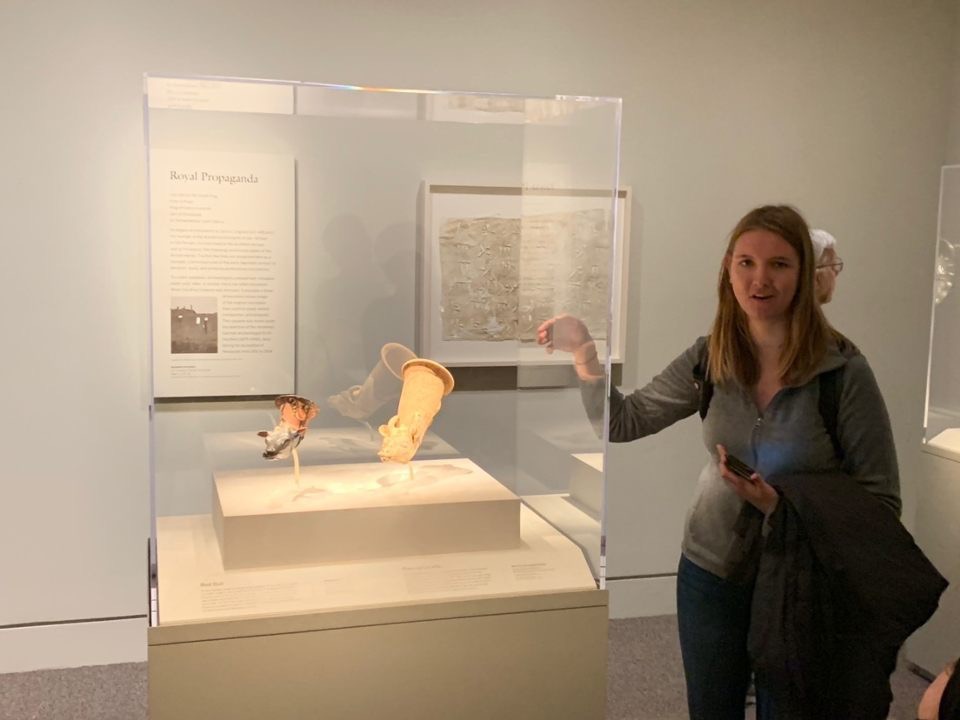For the curation assignment, Chris and I were assigned to the National Museum of American History. After looking at different exhibitions and objects currently on display, we decided to select objects that spoke to the stories of different Asian American experiences in the United States. My object was a wooden name plate used during Japanese internment that is currently located in the Righting A Wrong: Japanese Americans and World War II exhibition. Japanese internment describes the period during World War II where individuals with Japanese ancestry were targeted by the United States and placed into relocation, or internment, camps in order to protect national security. The name plate belonged to Michibiku Ozamoto as indicated by her last name on the plate in bright white letters. Accompanying the name, the object contained the numbers “24-4-3” that indicated she was in Block 24, Barrack 4, and Apartment 3 within the greater Manzanar relocation camp. In fact, the name plate was made from wooden scraps from the internment camp. However, I find it important to highlight the anti-Japanese sentiment in the United States prior to internment and how that shaped later anti-Japanese policies before addressing the specifics of internment.
A key point of connection between Chris and I’s objects was the Chinese Exclusion Act of 1882. The Chinese Exclusion Act actually increased Japanese immigration to the United States. West Coast businesses needed labor, specifically farm labor, and asked the Japanese government to send over workers. Before this period, there were not many japanese immigrants due to the Naturalization Act of 1870 where only those of African or white descent could become naturalized citizens. This act effectively excluded japanese individuals. Soon the United States nativists started to have the same sentiments towards the japanese individuals as they did towards the chinese (especially in California). News outlets started to post anti-Japanese articles. A Japanese and Korean exclusion league was formed. Nativists saw the Japanese as taking their lands, businesses, and not returning to their home country. In 1913, an alien land bill was passed in California to prevent Japanese aliens from owning land. In 1924, an immigration act prevented any individuals eligible for citizenship from being admitted into the country. Even those that did have citizenship were viewed as secondary citizens and ‘not quite’ american. These were the emotions building in the United States before December 7th, 1941 when the Japanese military attacked Pearl Harbor. Thus, all these emotions grew to hysteria.
On February 19th, 1942 President Roosevelt issued executive order 9066 that led to the mass incarceration of approximately 120,000 individuals with Japanese heritage. By march, people were located in the Manzanar relocation camp that my object was located in and throughout the years many times moved to more camps. There were supposed to be supplies, foods, and protections for those incarcerated; however, many had their properties liquidated, sold, and given away to other owners. The Western Defense Command created military zones that forced japanese individuals to move into these camps. Japanese individuals were told by California Governor Olson that they were “being removed only to protect you and because there might be one of you who might be dangerous to the United States. It is your contribution to the war effort.” Unfortunately, the camps would not close until after the war and Japanese individuals would not be able to naturalize until 1952.
A final interesting point concerns the Japanese gardens on the camps. Manzanar means “apple orchard” in Spanish, but the camp was a desert. When the camps were built, Japanese individuals began to build beautiful gardens that brought their cultures into these areas. These gardens were ranked in contest and viewed in a strange way by people outside the internment communities. Thus, there was a consumerism and viewership associated with the incarceration of Japanese individuals.
— Chris Barry and Raven Baugh
